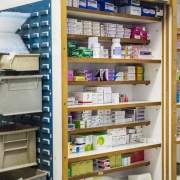Self-Funded Plans Benefit from Continuous Monitoring.
There is enormous financial and plan performance value in continuous monitoring of benefit claim payments. When you entrust a health insurer or other administrator to process claims for your self-funded plan, you hand them an open checkbook in many regards. While much of what they do goes as expected, a surprising percentage falls outside of the agreed-on parameters. It means plan members (your employees) may not be receiving the most effective outcomes, and costs can rise needlessly. Some of the processing abnormalities are inadvertent, and others may be more purposeful — because no one thinks you’re watching.

Where Does Continuous Monitoring Help the Most?
When clients are weighing whether or not to sign up for continuous claims monitoring, many ask for examples about where it helps the most. While experience shows it is useful across the board, an excellent example for discussion purposes is prescription medications, brand-name versus generic. There are enormous price differences between the two and virtually no difference in quality. With doctors and insurance companies the target of countless incentives and sales pitches from pharmaceutical manufacturers, it’s common to try to slip in a branded medicine when a generic one is available. Continuous monitoring will catch it immediately.
Also, while you might catch these out-of-bounds items in an audit months or years later, the dollars are already spent, and recouping them is seldom straightforward. When you have real-time data in hand, you, as a plan manager, can have a factual discussion with your claims administrator and resolve the issue quickly. In the future, with monitoring in place, you’re able to be sure your instructions are being implemented and will continue. In other areas, your employee-members will benefit from what the monitoring catches in errors and irregularities. They should receive the promised benefits at the proper rate.
How Much It Cost to Monitor Claims Continuously?
Enrolling your self-funded benefits plans in continuous monitoring is budget neutral — or better depending on the value of the improper claims it catches. There are many excellent financial and plan performance reasons to monitor continuously. For plan managers, it means you’re always in a better position to answer questions from upper management or your corporate finance team. When claims administrators, often health insurance carriers, pay claims without real-time oversight, you have only their data to rely on. Not many companies or people self-report errors in the way independent monitoring does.
If you’ve struggled with cost-containment and been left with a mess to clean up after a medical claims audit, all of it can be avoided when you have continuous benefit claims monitoring services. You’ll also have a partner who goes to bat for you if needed — and all of the conversations are based on facts and data that cannot be disputed. The monitoring allows you to manage your plan more closely than ever in a straightforward, efficient manner. It’s a benefit to your company, and you’ll be making sure every dollar paid in claims is benefiting your member-employees as intended. If you have questions or need more information, anyone at TFG Partners can explain how continuous claims monitoring works.








